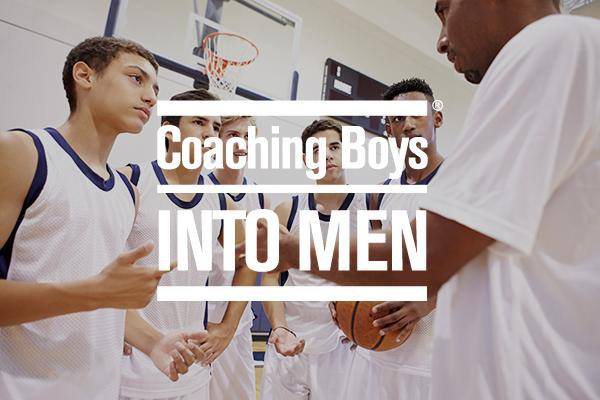“You play like a girl!” “You’re just a bunch of sissies!” These are just two taunts boys may say to their peers, but these phrases can also reinforce lifelong negative images of females.
Recognizing that organized sports and coaches play a significant role in shaping young people’s attitudes, the Domestic Violence Association of Central Kansas hosted a two hour training Monday evening at the Salina Fieldhouse. “Coaching Boys Into Men: Engaging Young Men and Boys Through Athletics to Prevent Gender Violence” was presented by Noalee McDonald-Augustine. Seven area coaches attended. McDonald-Augustine works for the Smoky Hill Education Service Center, which has offices in Salina.
According to Futures Without Violence, CBIM “is a violence prevention program” designed to inspire coaches “to teach their young male athletes about the importance of respect for themselves, others, and particularly women and girls”. CBIM outlines a framework for 12 fifteen minute discussions that take athletes through a research and evidence-based program.
Do We Really Have an Issue in Salina?
One female coach at an area school said that last year, she worked with seven students who experienced gender based violence. She was one of many adults in that school.
Statistically, 1 in 3 women report physical or sexual abuse by a boyfriend or husband at some point in their lives.
After one sports season officially came to an end in our region last year, male students attending rival schools continued in a different kind of competition in the off-season. The goal dealt with the conquest of females, and the “Cream Team” kept its own scores. Some of this played out in local social media.
Why CBIM?
As outlined in CBIM resource material, “athletic coaches can play an influential role in the lives of young men, often serving as life-long mentors to the boys they coach. Because of this unique relationship, coaches are poised to positively influence how young men think and behave on and off the field.”
McDonald-Augustine said, “Many coaches are masters of communication. Coaches use language to lead, instruct and inspire.” Coaches also know how to harness natural aggression—to tackle opponents and score points. CBIM also gives coaches tools to remind athletes that that aggression stays on the playing field and must not be brought into their relationships.
Week 8’s lesson notes that in sports, the “goal is often to dominate and intimidate” opponents. “But in sports, aggression is controlled by rules.” Those who break the rules may be benched, are at risk for hurting themselves or others, and may end up losing points/calls/game.
Lesson 8 continues “Like in the game, there can be serious consequences when aggression crosses the line in real life. Abuse or violence can result in losing relationships . . . and even going to jail.”
Lesson 9 offers the reminder that “When someone says ‘NO’ in any sexual situation, it means NO. To ignore it is WRONG and it’s AGAINST THE LAW.”
So How Does CBIM Work?
Coaches are encouraged to select a consistent day after practice to hold the brief discussions. Coaches are provided with a “warm-up” to begin discussions. Coaches are also provided with several questions and scripted discussion points.
CBIM also relies on “teachable moments” and “bystander intervention”. Upon completing the training, coaches knew how to respond to spontaneous comments. After three months of CBIM, “athletes were significantly more likely to intervene when witnessing abusive or disrespectful behavior among their peers” (according to a three year program evaluation funded by the CDC, completed in Fall 2009).
CBIM has been used successfully at Thomas More Prep, in Hays for five years, under then Coach John Montgomery.
Monday’s class encouraged coaches to reflect on their own words and actions and encouraged them to serve as role models for the athletes in their school. One coach said he continually tells his athletes “we don’t lose”. After a pause, he said he continually reinforces to his players that “we are always learning”.
The 2nd lesson deals with personal responsibility. Responding to the prompts offered by the CBIM cards, a Southeast of Saline coach uses several methods to promote personal responsibility. If a few teammates aren’t getting to practice on time, he “runs them”. If the team isn’t working hard, he involves the captains to help get better results. If teammates aren’t respecting each other, he might have a “heart-to-heart talk”.
Other lessons deal with “digital respect”, “understanding consent”, “communicating boundaries”, and “modeling respect and promoting equality”.
At the end of season, athletes are asked to sign this CBIM pledge: “I know that violence is neither a solution nor a sign of strength and I commit to treating everyone with honor and respect. I believe that strong men publicly and actively denounce violence against women and girls and that I can be a role mode by making this pledge.”
Parents and fans can present a challenge, especially if they possess a “win or die” mindset. They too can be educated that the words they use matter; they too can be invited to sign the pledge.
For additional information, contact Noalee McDonald-Augustine at Smoky Hill Education Service, at 785-621-4414; she can also be contacted at nmcdonald@smokyhill.org . The Domestic Violence Association of Central Kansas’s Salina phone number is 785-827-5862 and their website at dvack.org contains additional information. A 24 hour helpline is available at 1-800-874-1499; if it is an emergency, call 911.
Writer’s comments: For years, I’ve known that the time after the Superbowl can be especially dangerous for girlfriends and wives. I’ve not known of anything that helps address the violence that remote spectators may initiate. I am delighted to find something as comprehensive as CBIM that starts the discussion with student athletes.
More than a decade ago, I did a school lunch program review at a western Kansas school. While observing lunch, I witnessed odd interactions between one student and one cafeteria worker. She had graduated two years earlier. But, in a district of <120 students, some of those students were her friends. A few days earlier, a star athlete called call the worker an “f’ing b” (my abbreviation) when she declined to bring to his table additional condiments. This kind of banter was common, but it bothered the worker and other staff. The athlete was the son of a powerful school board officer. The worker was willing to put the details in writing (which helped me write the incident into the review summary, but I had no idea what kind of complications she might face for “talking”). The school superintendent was gone the day of the review, so I shared review findings with the Clerk of the Board, who happened to be that athlete’s aunt. I told her, “Surely, the district has a policy to address” problematic interactions between students and staff. She replied, “surely”–though neither she nor the food service director could remember where such a policy could be located.
As I left, two male students wearing varsity jackets body slammed a third student into lockers. I had to try to decide if I’d witnessed bullying or horseplay. While some schools have a “wonderful” climate, others had a far way to go to creating a respectful environment for all. I realized I attended Monday’s training mostly to see if there was a systematic approach to address the issues I’d witnessed. CBIM offers one solid approach.



